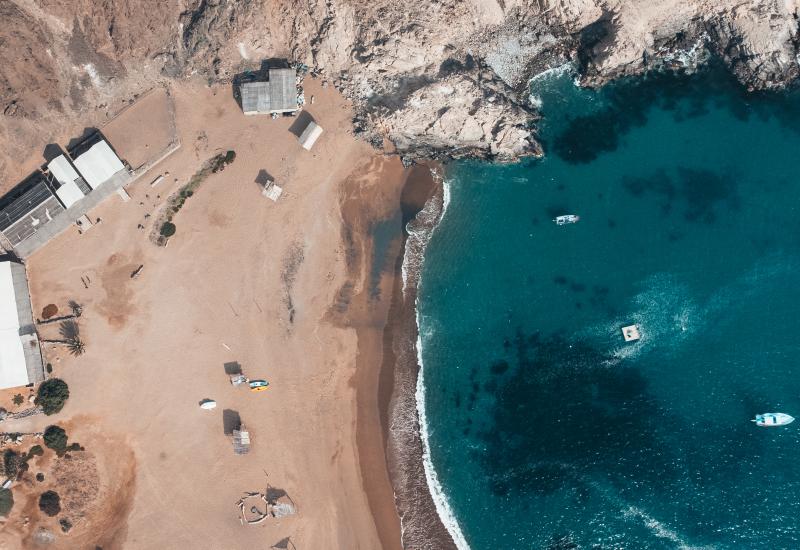Liveaboard Diving At San Clemente Island
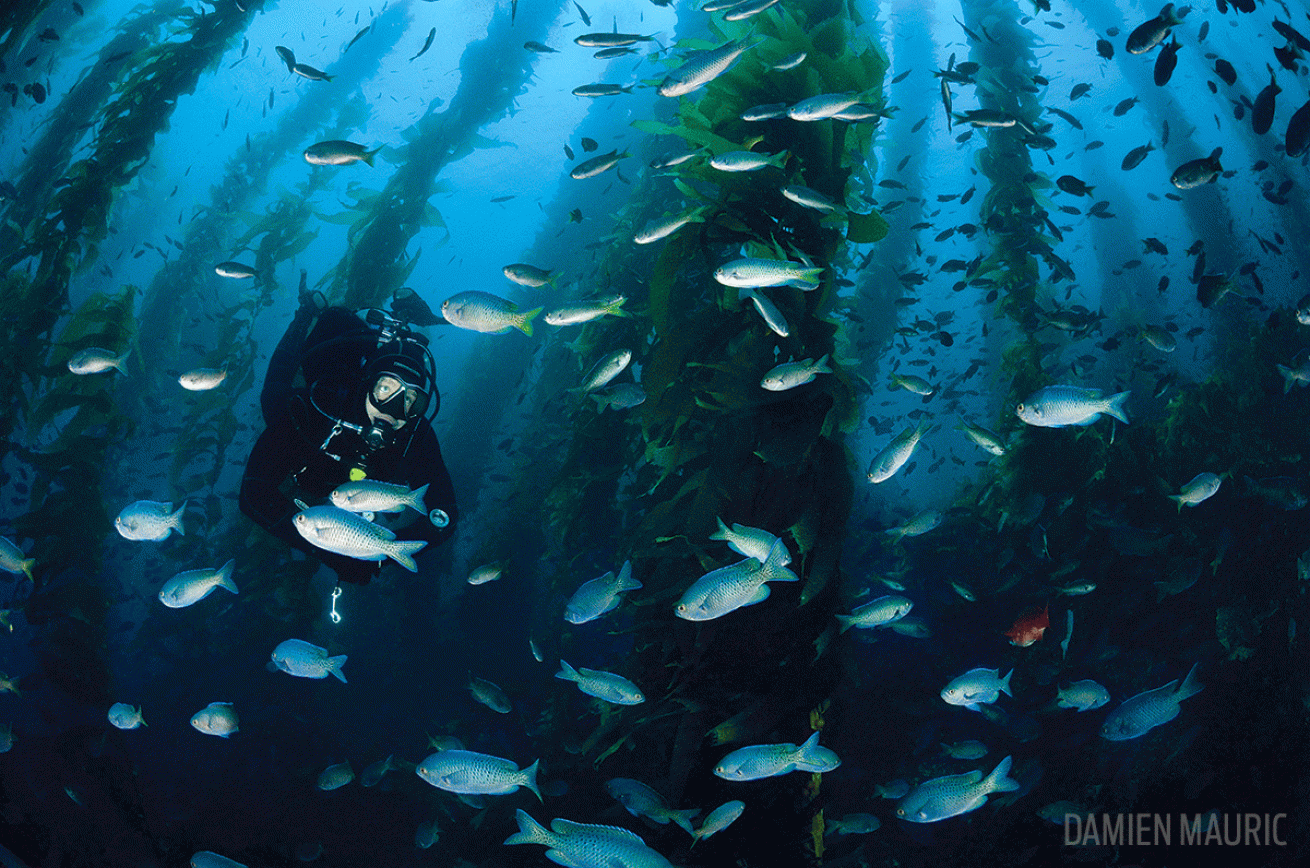
Damien MauricAn Underwater Forest
Schooling blacksmiths are an added bonus for divers exploring otherworldy kelp forests in San Clemente Island.
When diving secluded San Clemente Island, the southernmost of the eight Channel Islands, it’s impossible not to think of the military. Officially uninhabited, the island has been owned and operated by the U.S. Navy since 1937.
The 21-mile strip of land serves various military-training purposes. It’s the Navy’s last ship-to-shore live-firing range, providing a location in the Pacific to train in multithreat warfare while simultaneously using shore gunnery, bombardment, air defense, and electronic and anti-sub warfare. The auxiliary naval airfield is used for carrier and pilot training, and is home to Navy SEAL training facilities north of the runways.
As surprising as it might sound, it’s not unusual for divers to witness a free air show during surface intervals as McDonnell Douglas F/A-18 Hornets play Top Gun along the island’s backside.
But one should not be deterred from visiting San Clemente for fear of unwittingly taking an active role on the battlefield. Civilian access to the island is prohibited, but the real action is underwater. Most of the areas around the island are accessible to the public for recreation such as diving and sport fishing, with more than a dozen sites open to divers.
Getting to the island is not easy — it lies 60 miles south of Long Beach and 80 miles west of San Diego. San Clemente is accessible only by infrequent multiple-day charter trips, like the one we took aboard Horizon out of San Diego. If conditions are rough, the crossing can take up to eight hours. But the trip is worth it because the unbelievable abundance of marine life that amasses around this largely undisturbed ocean frontier offers a rare glimpse of the southern portion of the Channel Islands.
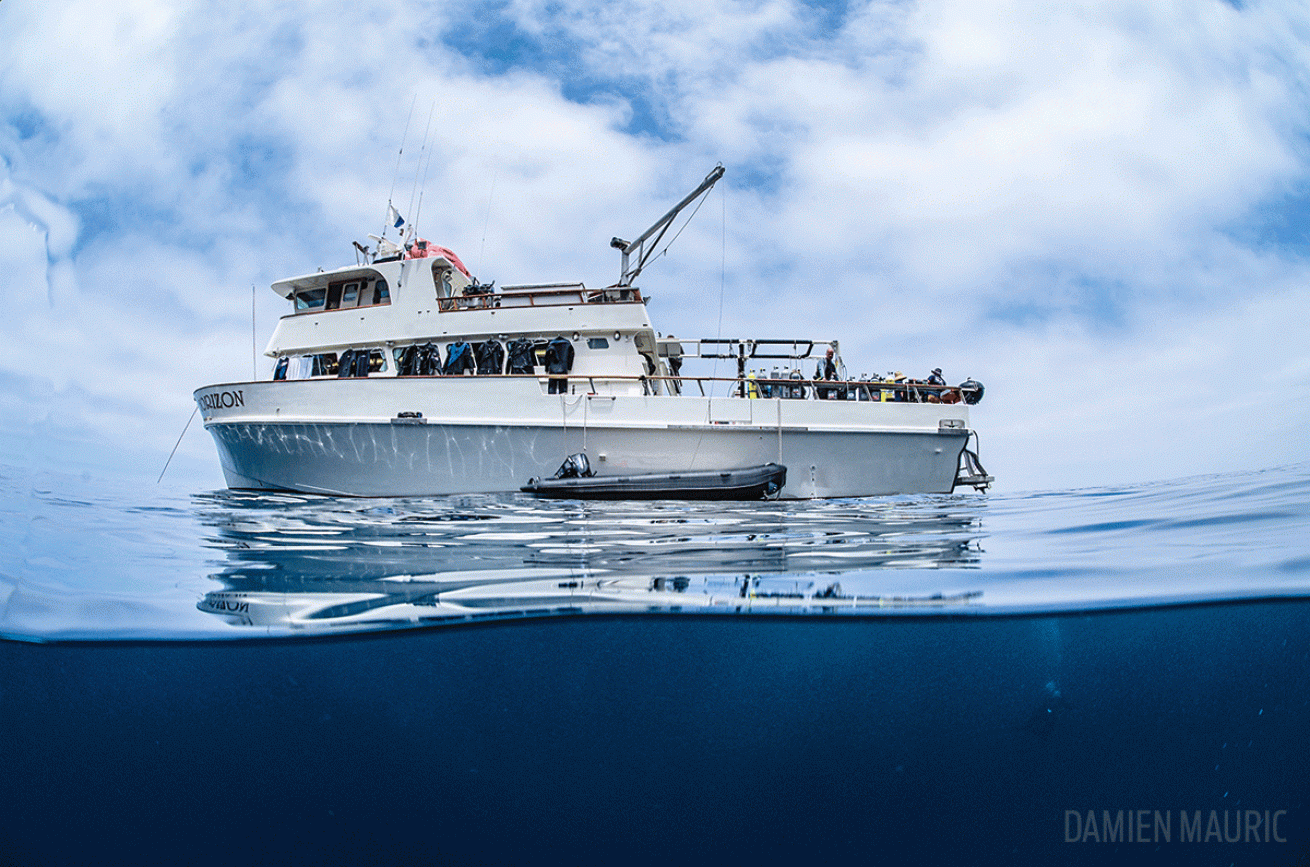
Damien MauricHorizon
Fishing-vessel-turned-dive-boat that was our gateway to San Clemente.
San Clemente Dive Guide
The sound of a heavy chain sliding on the anchor windlass awakens my dive buddy and me at 6 a.m. Horizon is a fishing-vessel-turned-dive-boat that can accommodate up to 30 divers. It has a spacious sun deck and a large diving deck with camera tables inside and out, which is a plus for photographers. Food is simple but served in ample portions in a large dining area.
We jump out of our bunks and make our way to the diving deck — at last we are at remote San Clemente.
The Channel Islands had always been high on our list; we greet the morning with excitement and anticipation. Diving conditions here can be unpredictable, and trips can be hit-or-miss. On this day, the ocean is calm. The sun’s rays penetrate the water and magically dance along the surface framed by the seabed visible 70 feet below. Luck is on our side, and we are ready to explore.
Our first dive is at Pyramid Head, at the extreme southeast end of the island. As we swim to the anchor line, we recall our dive briefing, wrought with warnings of potentially strong current and surge that can make the dive challenging. But we could not have asked for better conditions.
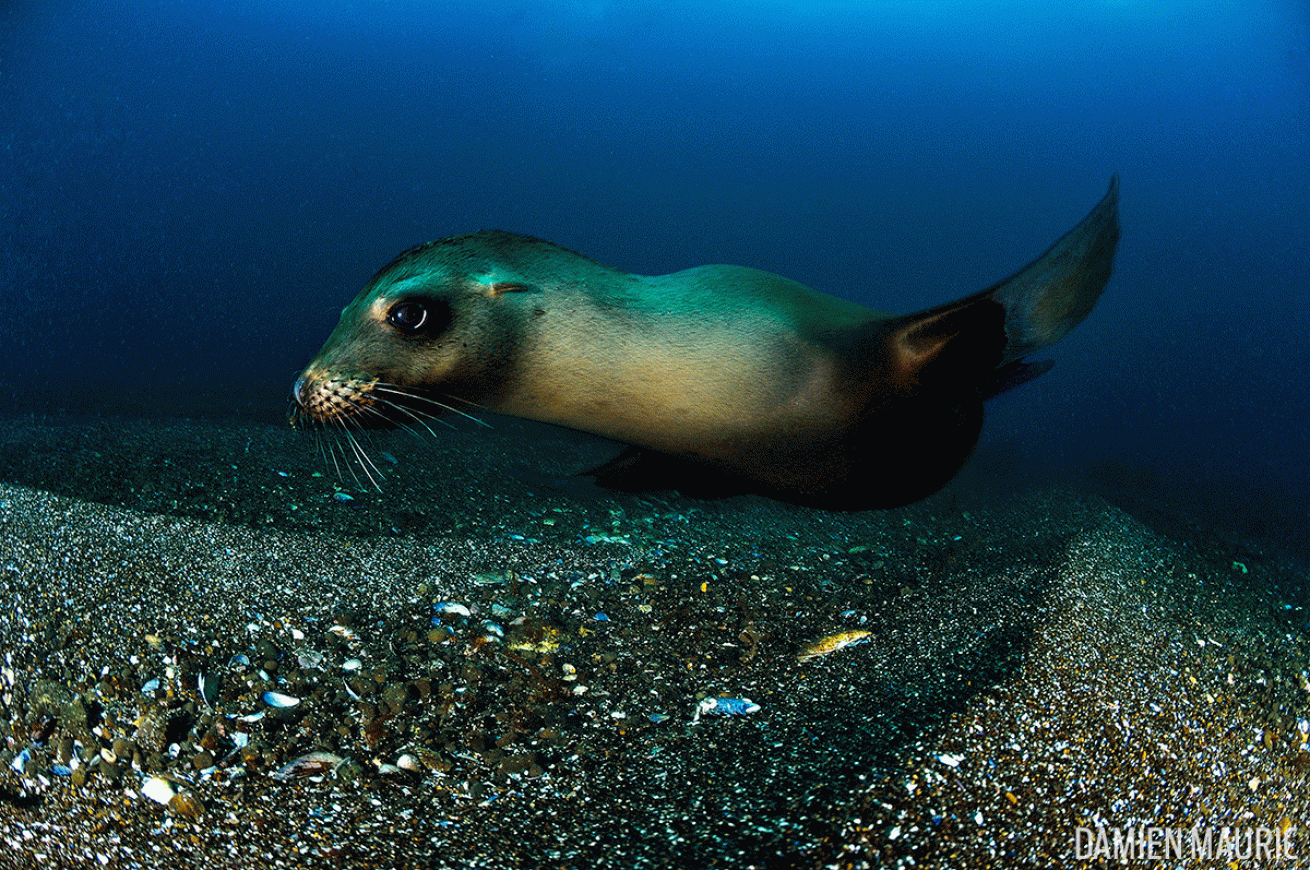
Damien MauricPlayful Seals
San Clemente Island is home to both seals and SEALs.
We get a friendly welcome from a seal pup that quickly takes a liking to our bubbles. Spring’s arrival has warmed both the waters and the hearts of the ocean’s inhabitants. We follow our playful friend to his playground, in 50 feet of water. The sandy bottom gives way to rocks and a thick bed of lustrous kelp. As we enter this underwater forest, columns of giant kelp dominate the scene. The rocky reefs and walls are carpeted in short palm-frond kelp, clusters of red and brown algae, yellow and orange sponges, and a multitude of anemones.
Everywhere we look we find all the expected critters in great numbers; vividly colored garibaldi and their blue-dotted juveniles, elegant Spanish shawls and large, curious sheepshead plow through these waters. Schools of blacksmith dart through current-loving red gorgonians as golden sea fans gently sway in time with the kelp. Juvenile calico bass and small kelpfish camouflage themselves between strips of brown kelp.
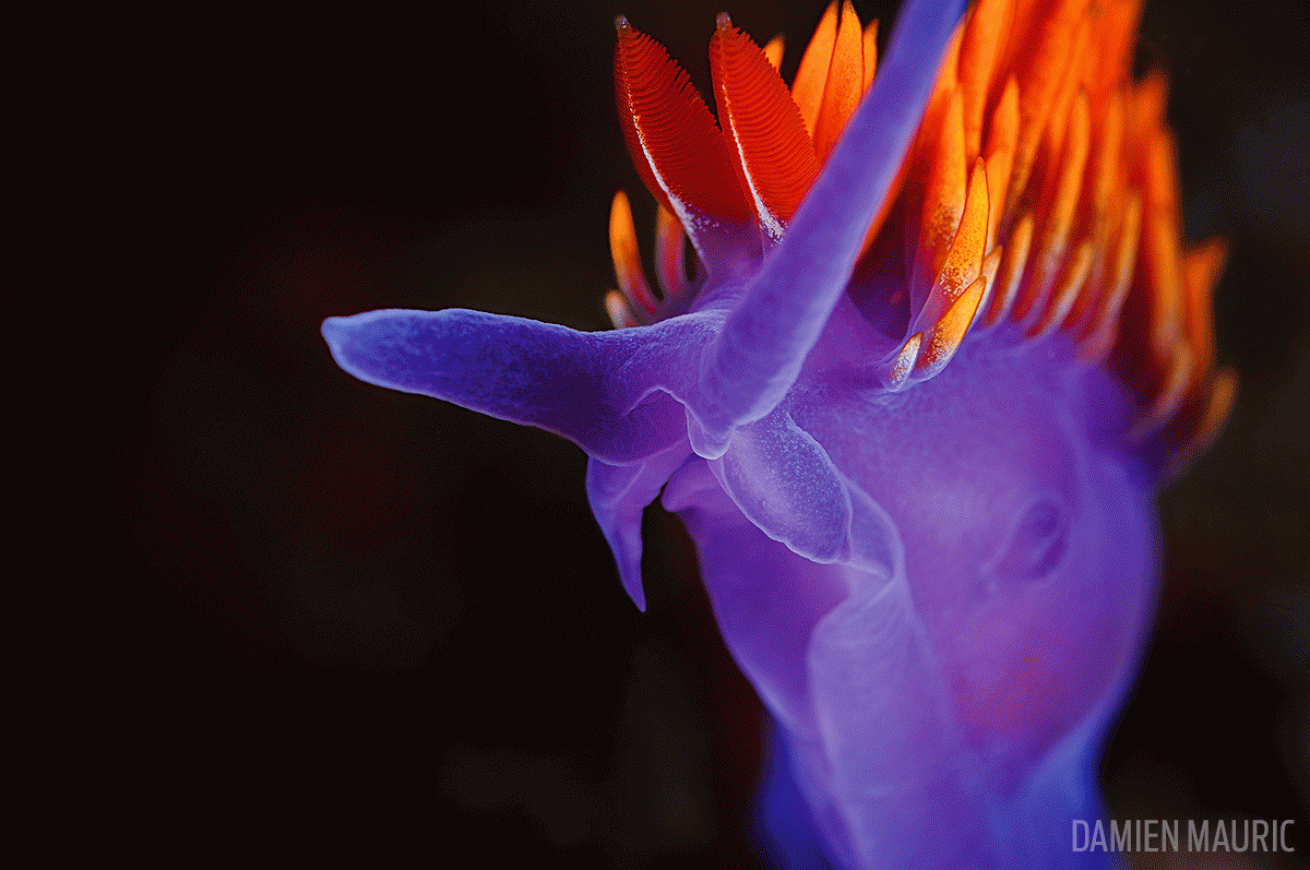
Damien MauricNudibranchs Galore
San Clemente Island is home to many vibrantly colored nudibranchs like this Spanish shawl.
Ascending toward the surface, we make a kelp-forest canopy tour and discover the enjoyment of midwater diving. The canopy splinters the sunlight illuminating the kelp fronds and the fish below. Small shoals of sardines, almost invisible against the blue sky above, swim beneath the surface where the canopy clears. Slight surge rocks the entire forest gently back and forth.
As we navigate through the towering plants back to our vessel, a rare soupfin shark swims away from us with tranquil confidence, a sighting that instantly gives us topside bragging rights.
We had traveled all the way from Europe to discover the exuberant undersea wonders of San Clemente Island, and we feel blessed by the experience. There is so much to explore that even after nine dives in two days, we are left wanting to discover more.
As our boat leaves behind the lush aquatic environment of San Clemente, a small pod of dolphins appears and playfully swims into the bow’s wake, accompanying us for a precious few minutes. A perfect ending to a perfect Southern California dive trip.
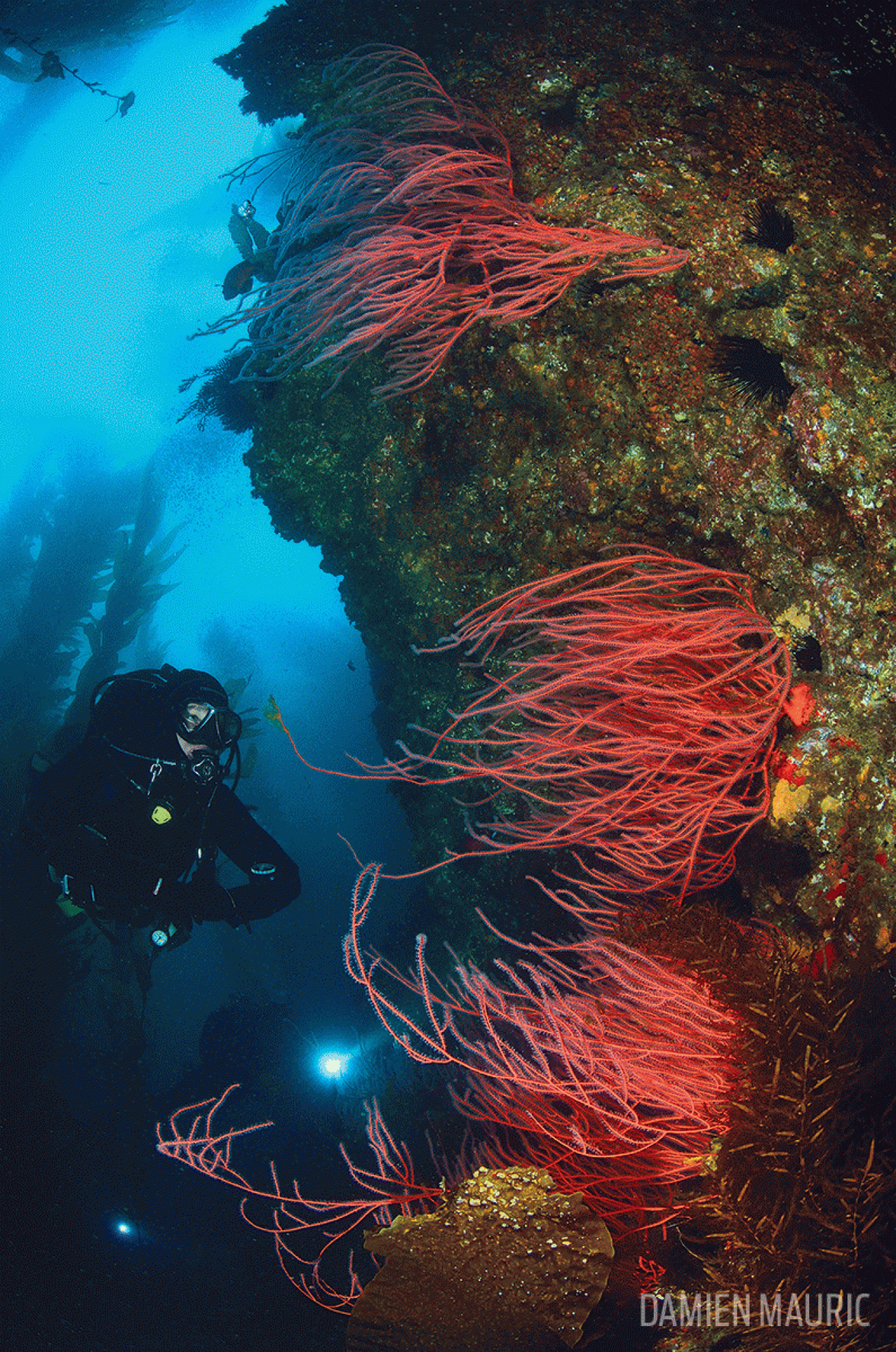
Damien MauricUndersea Wallpaper
Gorgonians and red sea fans cover the staggering walls of San Clemente Island
5 Reasons To Dive San Clemente
1. Remoteness
The island is so isolated that there likely will be no cellphone reception until you return to the harbor.
2. The Summertime Island
Excellent diving is available year-round, with warmer water and better visibility than anywhere else in California.
3. Kelp Diving At Its Best
Kelp is the first thing that comes to mind when diving Southern California; San Clemente offers access to rarely dived forests.
4. Cornucopia
San Clemente yields an abundance of marine life within and around its large kelp beds including seals, bat rays, big fish, soupfin sharks, and a variety of invertebrates such as lobsters, purple coral colonies, and red gorgonians.
5. SEALs
Like other offshore islands in the peninsular range, San Clemente is controlled by the military. It is a training ground for Navy SEALs.
Need To Know
When To Go: San Clemente is divable year-round, but the best period is from June to November.
Dive Conditions Visibility ranges from 40 to 60 feet winter and spring, and 60 to 100 feet summer and fall. Average water temps are in the mid-60s. A 7 mm semidrysuit or a drysuit is preferable.
Logistics: San Clemente is 60 miles from the mainland; the crossing can take up to eight hours. Multiday liveaboard trips are the norm. The island is sometimes closed to diving by the Navy.
Operators: Horizon Charters , Great Escape , Pacific Star Diving from San Pedro; Cee Ray from Long Beach.
Price Tag: $300 to $500, depending on trip duration.




